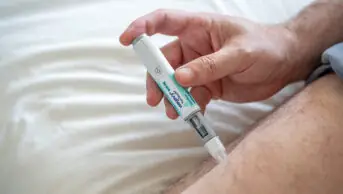
Antonio Romero / Science Photo Library
Patients recently diagnosed with diabetes who are prescribed metformin monotherapy are less likely to require treatment intensification compared with patients prescribed other oral glucose-lowering medications as a monotherapy.
Metformin should be prescribed as a first line treatment for type 2 diabetes patients, according to the Agency for Healthcare Research and Quality in the United States, the European Association for the Study of Diabetes in Europe, and the UK’s the National Institute for Health and Care Excellence.
To examine whether US prescribers were following this guidance, researchers at Harvard Medical School gathered data from a national health insurance company on 15,516 patients, and publish their findings in the Journal of the American Medical Association[1]
. Patients started on combination therapy or glucagon peptide 1 agonists were excluded from the study.
More than half of the patients (57.8%) were treated initially with metformin monotherapy, compared with 23.0% started on a sulfonylurea, 6.1% treated with a thiazolidinedione and 13.1% with a dipeptidyl peptidase-4 (DPP-4) inhibitor.
Patients were followed for just over a year and in that time, those who were initially prescribed a drug other than metformin were more likely to need treatment intensification with a second oral glucose-lowering medication or insulin (P<0.001). Only 24.5% of patients on metformin needed a second glucose-lowering medication, compared with 37.1% given a sulfonylurea, 39.6% treated with a thiazolidinedione and 36.2% with a DPP-4 inhibitor. For the latter three drugs, metformin was the most common agent added (67.5%). If initial therapy was metformin, the most common second drug was a sulfonylurea (52.8%). The researchers argue that the addition of a second drug to a patient’s treatment regimen should be avoided if possible, because it can reduce quality of life.
In addition, initiating treatment with the other medicines besides metformin did not reduce the risk of adverse diabetes events. In particular, starting treatment with sulfonylurea monotherapy increased the risk of cardiovascular events and hypoglycaemia.
Richard Elliott, spokesperson for Diabetes UK Research, says the study underlines existing recommendations that support the use of metformin as a first-line treatment for type 2 diabetes, “but adds new insight on the issue of treatment intensification”.
An editorial[2]
accompanying the study questions why the researchers excluded glucagon peptide 1 agonists. The researchers explain that these drugs were excluded because they were not licensed as monotherapy when the investigation began and they can be used off-label for weight loss.
The editorial also asked why treatment intensification did not also include an increase in medication dosage and highlights that titration of metformin dosage can be a lengthy process. “This slow increase of the dose over time may delay the time until a second oral agent is added without indicating the superiority of metformin.” However, titration of metformin up to the full dose is recommended to take only two weeks, according to the British National Formulary.
For oral agents besides metformin, the results from the study indicated an even greater likelihood of intensification after one year of treatment.
References
[1] Berkowitz S, Krumme A, Avorn J et al. Initial choice of oral glucose lowering medication for diabetes mellitus. JAMA Internal Medicine. 2014. doi:10.1001/jamainternmed.2014.5294
[2] Segal JB & Maruthur NM. Initial Therapy for Diabetes Mellitus. JAMA Intern Med. Published online 27 October 2014. doi:10.1001/jamainternmed.2014.4296


